Hershey Zoo: A Walk on the Wild Side

Introduction
Throughout the 19th and early part of the 20th Century there were only a small number of wild animal collections in the United States. Not surprisingly, zoos were big city attractions. The Philadelphia Zoo, Bronx Zoo and Baltimore Zoo all opened during this time period.
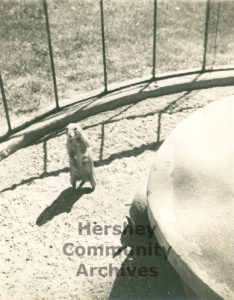
Milton Hershey believed in providing his town with experiences not typical for a small town. Hershey Zoo began in 1905 with an exhibit of prairie dogs in Hershey Park. In 1910 the Zoo formally opened. Hershey Zoo sought to feature exotic animals in its exhibits. Lions, leopards, monkeys and exotic birds were popular early attractions.
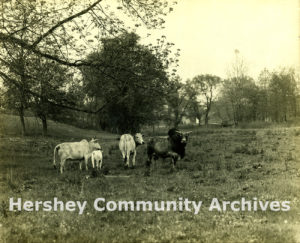
The growth and development of Hershey’s zoo has reflected changes in attitudes toward presenting wild animals in educational exhibits. The 1978 redevelopment of the Zoo as ZooAmerica reflected a commitment to care for captive animals’ emotional and psychological needs as well as providing for their physical care. Limiting its exhibits to animals native to North America allows ZooAmerica to emphasize the educational aspect of the zoo, combining entertainment with learning about native habitats.
Hershey Zoo
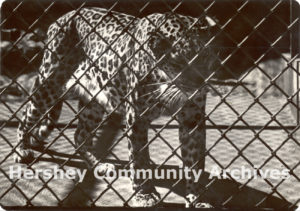
During Milton Hershey’s lifetime Hershey Zoo was a local attraction. Animals were added to the zoo because they became available or someone had a special interest in having a particular specimen in the zoo. In the era before television, zoos played an important role educating the public about animals and environments different than central Pennsylvania.
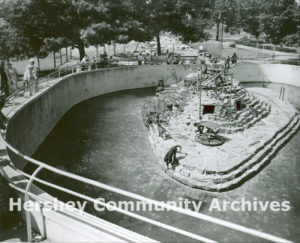
With the advent of World War II, Hershey Zoo closed on December 20, 1942 for the duration. The zoo reopened on May 7, 1950, under the leadership of the new director, Clarence Moose and assistant director Raleigh Hughes. Hershey Zoo followed the fortunes of Hershey Park during the 1950s and 1960s. At first the zoo was able to add some additional attractions, most notably Monkey Island in 1954. But there was never any money to develop the zoo. Hershey Zoo was closed in 1971 as part of Hershey Estates’ planning for a new themed amusement park, Hersheypark.

Animal Homes
Until the mid-20th century zoos housed their animals in cages. This was practical and efficient, enabling zoos to maintain good control over the animals. Zookeepers believed that cages provided a sanitary and scientific environment for the animals. For hygienic reasons, enclosures were small with hard concrete floors, and animals were kept behind strong iron bars with little privacy so as to be easily viewed by the public.
People did not consider the needs of animals and many were kept in appalling conditions. Public opinion about zoos changed with the development of sophisticated natural history television documentaries and the expanded opportunities for global travel.
People started to question the role of zoos and how animals were housed. Zoos responded by creating more naturalistic environments for the zoo animals and depending upon breeding and animal exchanges with other zoos to develop new exhibits.
Animal Favorites
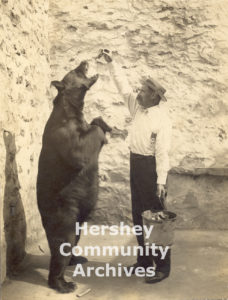
Hershey Zoo’s occupants often inspired great affection from visitors and keepers alike. Most animals were named. Animals such as bears, monkeys, and orangutans were particular favorites. Some of the animals were treated more like circus performers and zookeepers taught them tricks that they performed for zoo visitors.
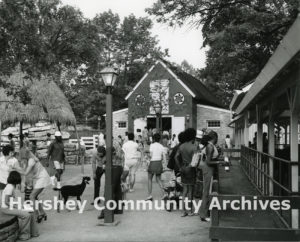
After Hershey Zoo closed in 1971, the public’s desire to interact with the animals led to the creation of The Animal Garden in Hersheypark. It featured a new monkey island, a barnyard petting zoo and baby animals such as llamas and elephants.
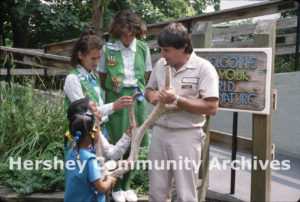
When ZooAmerica opened in 1978, it enhanced visitors’ natural affection for the animals by offering opportunities to learn more about the animals and their natural habitats.
ZooAmerica

A plan to redevelop the old zoo as a themed zoological park was conceived by John Strawbridge, then Hershey Museum director. He was inspired by the Toronto Zoo. By building a bridge across Park Boulevard, Hersheypark was able to directly link the Zoo to the Park. Opening in 1978, ZooAmerica featured exhibits of animals native to North America, with naturalized animal habitats.

The Zoo was divided into five sections over 11 acres: North Woods, Eastern Woodlands, Big Sky Country, Grassy Waters and Cactus Community. The exhibits featured more than 200 animals representing some 70 different species. In 1982, ZooAmerica became one of only 50 zoos in the United States to receive accreditation by the American Zoo and Aquarium Association.